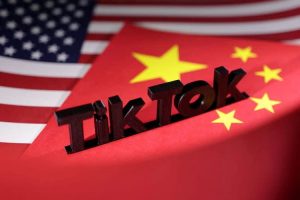(ATF) The Comprehensive Agreement on Investment that China reached with the European Union last week will help reduce the risk of Beijing being “marginalised” and give China more bargaining power to handle economic and trade conflicts with the US, analysts have said.
“The investment agreement between China and the EU is a heavy blow to the US’s agenda to ‘marginalise’ China from the international trade order,” Li Zongguang, Chief Economist at China Renaissance, said, adding that over the past few years the US had “crippled” the World Trade Organization (WTO) after dominating the Trans-Pacific Partnership (TPP) talks, while Obama was president, with the intention to marginalise China.
Despite US president-elect Joe Biden’s desire to coordinate an allied posture towards Beijing, Brussels went ahead with the deal, which will give European companies greater access to Chinese markets and help redress what Europe sees as unbalanced economic ties.
European leaders including German Chancellor Angela Merkel and French President Emmanuel Macron finalised the trade deal with Chinese President Xi Jinping via a video conference last Wednesday, the European Union announced in a press release.
Biden’s designated national security adviser Jake Sullivan tried to get the Europeans to put on the brakes earlier this month after news emerged that they were close to reaching an investment accord with China. Sullivan urged “early consultations with our European partners on our common concerns about China’s economic practices” – but EU leaders, miffed perhaps after four years of being marginalised by Donald Trump and his ‘America First’ policy, went ahead regardless.
RCEP and EU deals ‘enhance China’s position’
Li Zongguang said: “Both China and the EU made substantial concessions on key issues so as to conclude the CAI negotiations before Biden takes office. The deal is a common victory for both China and the EU. For Europe, it shows that it is not a vassal of the US, but an independent power with its own demands… For China, the completion of Regional Comprehensive Economic Partnership (RCEP) and the EU-China investment negotiations has greatly enhanced China’s position to handle US-China economic and trade disputes,” he said.
China and 14 other Asia-Pacific countries such as Australia, Japan, South Korea and New Zealand last month signed the RCEP agreement, which will create a free-trade area that accounts for around 30% of global GDP and population.
The EU-China investment deal was negotiated for nearly seven years and is likely to take at least another year to enter into force. It forms part of a new relationship with China, which the EU views as both a partner and a systemic rival.
European firms will gain permission to operate in China in electric cars, telecom cloud services and certain activities linked to air and maritime transport, such as ground handling services.
Joint venture requirements will fall away for the automotive sector, many financial services, private hospitals, advertising, real estate and environmental services, such as sewerage.
Companies that could benefit include Daimler, BMW, Peugeot, Allianz and Siemens, all of which have a large presence in China.
Forced labour and forced technology transfer to be banned
China will pass laws to ban forced transfer of technology from foreign companies, and has pledged to be more transparent on subsidies and bar state-owned enterprises (SOEs) from discriminating against foreign investors.
The deal includes commitments on climate change and labour rights, including forced labour, a first for China.
Commitments are reciprocal, but the EU market is already far more open. Brussels has given some ground in energy, but says its offer to China consists chiefly of guaranteeing the existing openness.
It still does not cover issues including trade flows or public procurement for the likes of telecoms equipment maker Huawei.
Deal to help ease US-China tension
While many critics say China made large concessions to the EU in order to close the deal before Biden is able to form a transatlantic alliance towards China after he takes office, Fan Lei, an analyst from Sealand Securities, expects the EU-China investment deal will also help ease tension between the US and China.
“The EU and the US have similar asks for China, to reform the economic system. If China can meet the EU’s standards, it will also significantly reduce the US’s concerns over China’s economic rules and practices. We believe the CAI will help ease the US-China economic and trade conflicts and the tension between the two countries if it can be effectively executed and its scope extended to more countries,” Fan said.
Xiong Yuan, an analyst from Guosheng Securities, said that the EU-China investment deal is expected to bring about great reforms in China in the areas such as technology protection, SOEs and labour rights, which are the key obstacles for China to join the Comprehensive and Progressive Trans-Pacific Partnership (CPTPP) and key issues for the US and China in regard to trade disputes.
He expects the EU-China investment deal could pave the way for China to join the CPTPP, a higher-standard trade pact backed by 11 countries in the Asia Pacific, which grew out of the TPP after Trump refused to back the Obama initiative.
“The Central Economic Work Conference has proposed that China will actively seek to join the CPTPP. China’s joining is only a matter of time,” he said.
Challenges remain
However, questions remain on whether the investment deal can be effectively enforced, Fan from Sealand Securities said.
Although China has opted to use a “negative list”, which means sectors that are not listed are, by default, open to foreign investment and do not need approval from the Chinese government, in practice foreign investors would still need the government’s support for land use and electricity supply, among other things.
Chinese state-owned enterprises (SOEs) also have easier access to resources than foreign companies although they are not protected in a legal sense. For example, it is easier for SOEs to raise money because they have implicit government guarantees.
These issues cannot be resolved by the EU-China investment deal, Fan noted.
The TPP trade deal was negotiated by former US president Barack Obama and 11 other countries – and excludes China. But the agreement never passed US Congress and Donald Trump’s administration withdrew the US from it shortly after taking office in 2017 and launching his “America First” policy.
The deal in its original form would have been the world’s largest trade agreement, covering nearly 40% of the global economy.
US president-elect Biden, who was a supporter of the TPP during the Obama era, is expected to seek to join the CPTPP, as he has an expressed a preference to pursue multilateral and regional engagement.
























